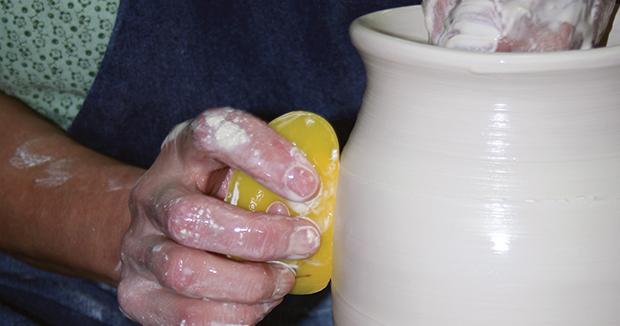

Mixing contrasting ceramic stains into a white clay body and then handbuilding with them can lead to some incredible pottery surfaces. For Naomi Lindenfeld, working with colored porcelain clay is a way to create active, engaging surfaces reminiscent of the textiles her mother once made.
In this post, an excerpt from Working with Porcelain, Naomi shares her technique for creating beautifully marbled colored clay slabs to handbuild with.
I have been drawn to working with colored clay since watching another student work with it while attending Boston University’s Program in Artisanry in the late 1970s. The nature-inspired and rhythmic imagery that appears as a result of working with layers of oxide-stained porcelain captivated me.
Process
Start by wedging a Mason stain or a pure coloring oxide into the porcelain. I have done tests to determine the percentage of colorants needed for a given shade. Recommended percentages are between 8% and 12% for Mason stains and between 2% and 4% for pure oxides. After weighing it, mix the powdered colorants with water to make a paste, then work that into the clay and wedge until the color is uniform (1). Note: wear gloves when working the colored paste into the clay.
After making up a variety of batches of different colored clays, I choose the color combinations that best capture the feeling I am after; typically combining four or five colors in a layered block to get some sense of depth, and alternating pairs of colors with a coil of white to lighten the colors. After selecting a palette, roll each piece of colored clay into a coil, flatten them with a rolling pin (2) and stack them up, patting them down each time to stick them together (3).


Elongate the resulting loaf, cut it in half, stack the halves (4) and repeat two more times to thin and refine the layers. When slicing the loaf open, undulating the wire slightly brings out more of the rings of the cross section (5). A slice is cut and the remainder of the loaf gets set aside and wrapped in plastic to use for future pieces. To create a white interior for functional pieces, laminate the colored clay slice onto a thin slab of plain porcelain (6).








